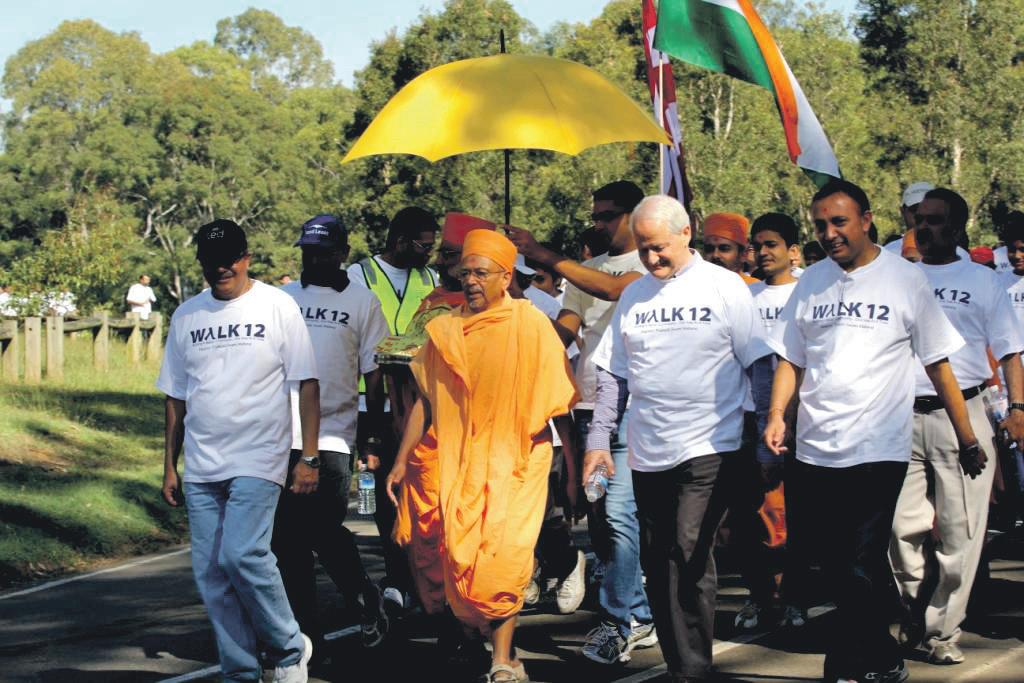
23 minute read
inaugural walkathon raises over $6000
from 2012-04 Sydney (2)
by Indian Link
OSaturday morning of March 31, BAPS, a community-based charity organisation, hosted its inaugural walkathon in support of medical research.
Families, children and seniors all turned out for the 3-kilometre walk through Parramatta Park and its surroundings, in Sydney’s west. Walkers were flagged off by Tyagvallabh Swami, senior sadhu of BAPS, and chief guest for the event the Hon. Phillip Ruddock MP, Federal MP for Berowra, former Howard-government Minister and Shadow Cabinet Secretary.
Mr Ruddock, representing the Federal Opposition Leader Mr Tony Abbott, read a special message from Mr Abbott congratulating BAPS on its contribution to the local community. “I want to acknowledge that you are doing something very special,” said Mr Ruddock, sharing those sentiments.
Funds for the walkathon, which was inspired by His Holiness Pramukh Swami Maharaj, were raised by walkers themselves, including young children who sought donations from family and friends to sponsor them for each kilometre walked.

The beneficiary of the funds was Westmead Medical Research Foundation (WMRF), which undertakes life-saving medical research, and relies on community donations to continue their outstanding work. At the end the participants, Mr Ruddock presented a cheque of $5,251 to Ms Chris Bauer, Community Fundraising Coordinator of WMRF. However, online donations continued past this point and as of April 4, around $6,600 had been raised from the event. “Even if today’s event didn’t even raise a penny, the fact that you want to do it and have engaged with it, makes it worthwhile,” said Mr Ruddock, as he commended BAPS and the walkers.
Close to 400 walkers participated in the walkathon, and participants enjoyed light refreshment after the event.
BAPS is a not-for-profit community-based charity organisation committed to sincerely serving the world by caring for individuals, families and communities. Community walkathons such as this are one of many social, medical and cultural activities hosted and supported by BAPS globally and locally.
For more information visit www.baps.org.
Westmead Medical Research Foundation supports life-saving medical research, and the care of sick adults and children at Westmead Hospital in Sydney’s west. They do this by raising funds that enable researchers to continually push the boundaries of medical innovation, while also broadening the scope and reach its treatments.
For more information visit www.wmrf.org.au.
Yogi Savania




• Experienced,
• Experienced kitchen help
• Talented, well groomed and experienced restaurant and catering manager * must have , rsa . Barista and own transport.
SUCCESSFULL Indian Restaurant in Parramatta for SALE
• Great location, situated in busy restaurant area of Harris Park/Parramatta
• Conveniently located, close to Parramatta CBD
• Fully furnished; all new look and Brand new top of the range furniture.
• GREAT MARKETING EXPOSURE
• 100+ approved Seats and a separate function room
• Fully licensed and well equipped bar

• Reasonable rent; Long Lease can be done
• Gross sales for $9000+ per week and improving continuously
• Music system (surround), POS
• 1000 litre grease trap
• Back to base alarm system
• Fully equipped kitchen (6 burner gas, tandoor, dishwasher,
• 3 bulk cooking gas, huge Cold Room, Fridges, Freezers, lot of utensils)
• Ample Street Car Parking available
• No Further Spending Required
• Value for Money Asking Price (cost of such restaurant setup, will be more then the asking price)
Selling because of other UnAvoidable Commitments
HUGE POTENTIAL FOR THE RIGHT OWNER | SPONSORSHIP FEASIBILITY
Serious buyers only. Private numbers or Blocked calls will not be answered. Agents welcome for enquiries
Enquiries on 0416 645 627
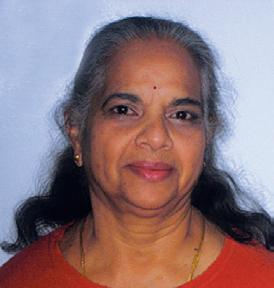

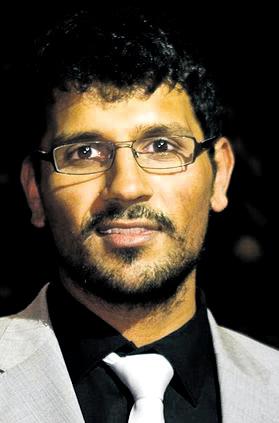
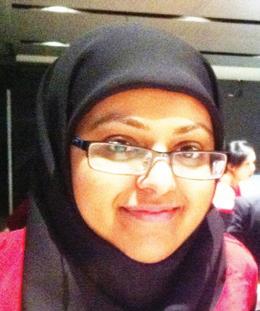
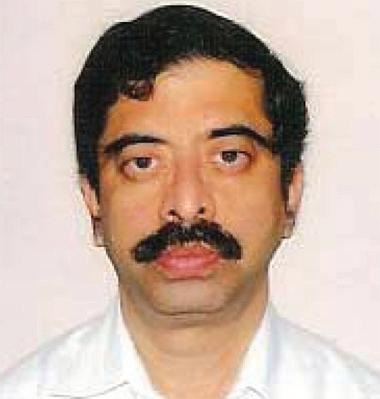
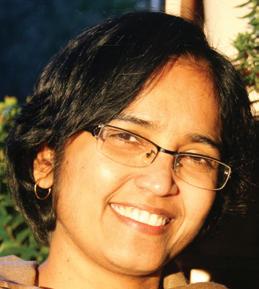
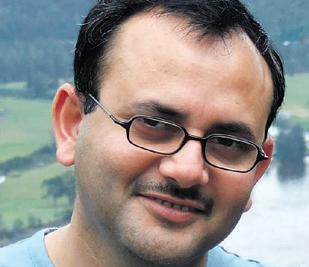



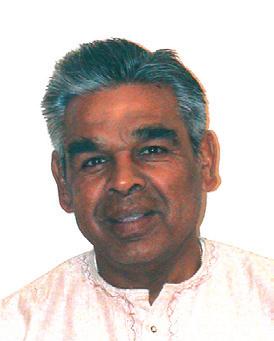
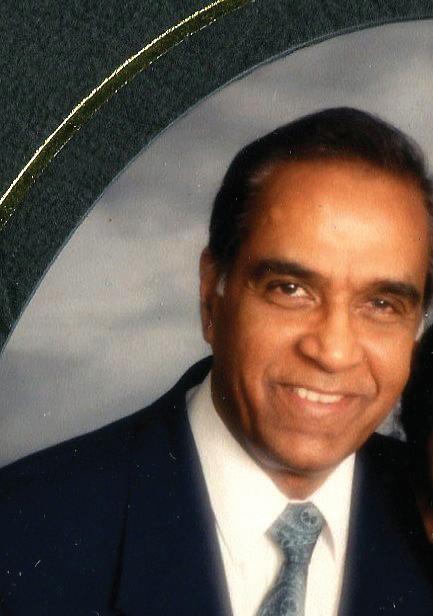

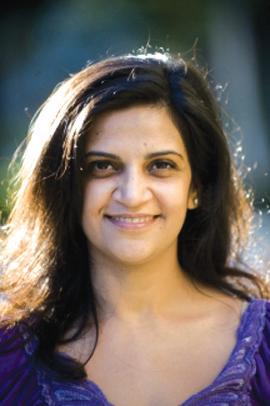





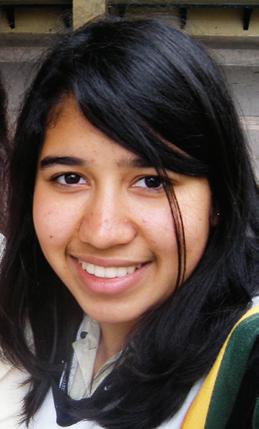


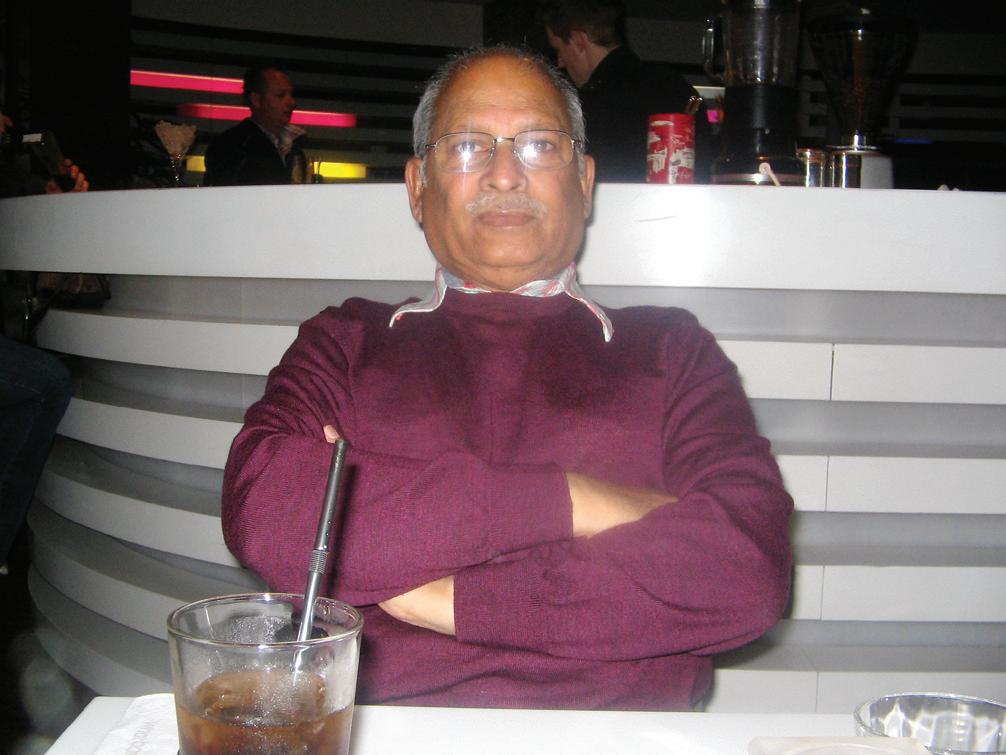







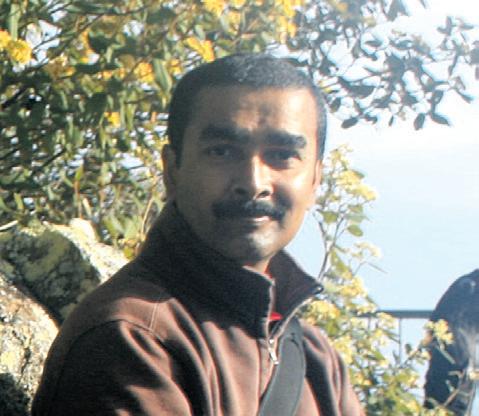
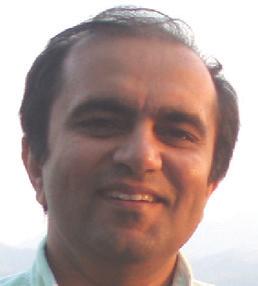
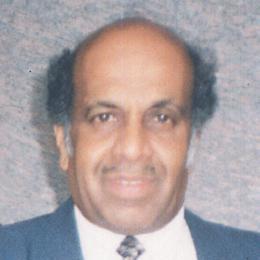


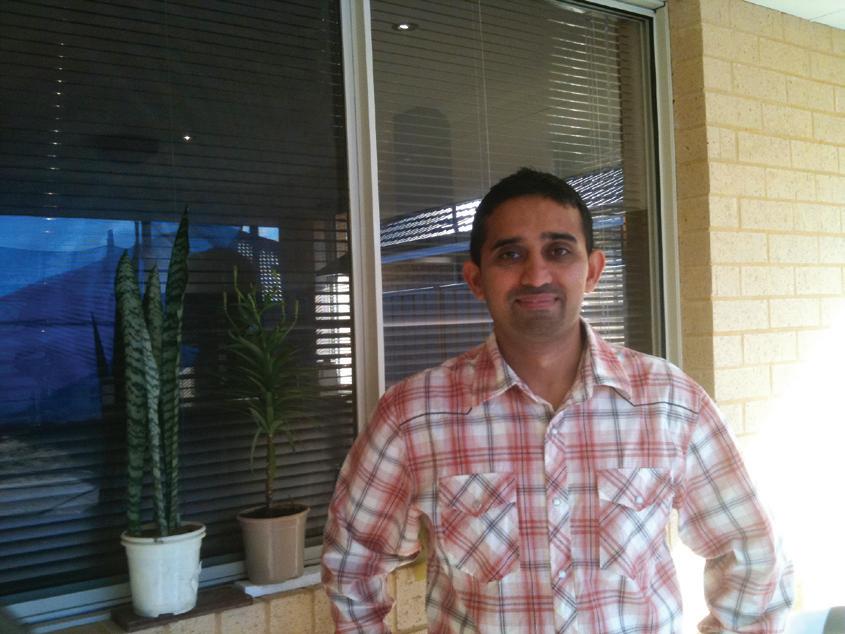


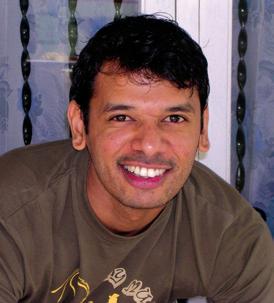
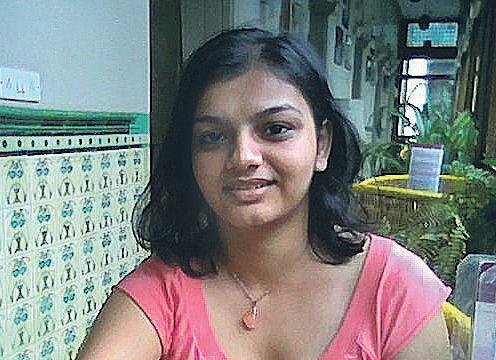



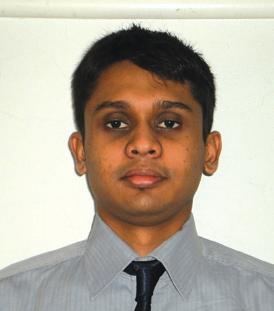









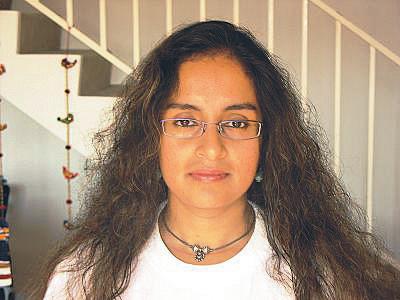






Are you looking for a career in Family Day Care?
Come along to “Aussom Family Day Care ”

Aussom Family Day Care opened its doors in Jan 2008 and has offices in both Melbourne and Sydney, to provide quality early childhood education and care to children.
• We offer flexible contracts to genuine people interested in caring for and educating children aged between infants to 12years old in their own home,
• We would love to engage a diverse range of educators from many different cultures,
• A commitment to enrol into Certificate 3 in Children’s Services and other criteria apply,
• We have a team of dedicated professionals waiting to help you kick start your career in Family Day Care.

• We offer comprehensive support and guidanceall you need to do is pick up the phone and make an appointment.
Indian-born Kamaljit Bawa elected to prestigious US academy
Indian-born Kamaljit Singh Bawa, a distinguished professor of biology at the University of Massachusetts, Boston, has been elected a member of the prestigious American Academy of Arts and Sciences.
Bawa, founder and president of Bangalore based Ashoka Trust for Ecology and the Environment (ATREE), will join the academy Oct 6 with some of the worlds’ most influential artists, scientists, scholars, authors and leaders.
Besides sustainability expert Bawa, others elected to the Academy in public affairs and journalism category are: US Secretary of State Hillary Clinton, former Tennessee Governor Phil Bredesen, Jr, veteran diplomat R. Nicholas Burns, television journalist Judy Woodruff; and Boston Globe editor Martin Baron.
“Election to the Academy is both an honour for extraordinary accomplishment and a call to serve,” said Academy President Leslie C. Berlowitz.
“We look forward to drawing on the knowledge and expertise of these distinguished men and women to advance solutions to the pressing policy challenges of the day.”
The announcement of Bawa’s election came as he was receiving the Gunnerus Sustainability Award the world’s first major award for sustainability, awarded by the Royal Norwegian Society of Sciences and Letters, for the impact his research has had on the sustainability of global biodiversity.
FBI urged to check hate crimes against Sikh-Americans
As many as 92 US lawmakers have urged the Federal Bureau of Investigation (FBI) to collect data on hate crimes against SikhAmericans as their appearance makes them acutely susceptible to violence.
“The more information our law enforcement agencies have on violence against Sikh-Americans, the more they can do to help prevent these crimes and bring those who commit them to justice,” the lawmakers wrote in a letter to FBI.
“The Department of Justice and FBI have carried out important outreach efforts in coalition with the Sikh community, but these efforts must also be paired with data collection to ensure we are doing everything possible to crack down on hate crimes against the Sikh community.”
Sikh-Americans are often targeted for hate crimes because of their distinct identity and common misperceptions with respect to their attire and appearance, wrote lawmakers led by Democrat Joseph Crowley, chief deputy whip in the US House of Representatives.
Attackers often appear to erroneously believe that Sikh-Americans are affiliated with extremists and were somehow responsible for the Sep 11, 2001 terrorist attacks on the United States.
Over the past year, Sikh-Americans and their religious institutions have been threatened or attacked in highly-publicised incidents in New York, Michigan, Virginia and California, where two men were murdered.
Advocacy groups believe it is likely that many other incidents have occurred but went unreported.
A former six-term member of the House Foreign Affairs Committee, Crowley currently serves as co-chair of the Congressional Caucus on India and IndianAmericans. He has often taken up issues related to Indian-Americans and the SikhAmerican community.
From London to Sirdargarh, a Guyanese Indian’s journey
Just about a hundred years after her father left India for Guyana, Enid Whitehouse made an emotional journey to a small village in Rajasthan’s Ganganagar district to learn more about her father’s life.
A London-based lawyer, Enid had known that her father had come to Guyana from India as an indentured worker in December 1911. But her interest in his life was sparked off by her young nephew when he discovered fascinating vignettes of his maternal grandfather’s life while writing a research paper on his family history.
Enid came to know that her father had played a prominent role in the Lusignan riots which were a significant event in Guyanese Indian history. There were documents about the agitation and the court case in the India Records section of the British Library and also in the Library of Congress as well as newspaper clippings of the trial.
Guyana-born Enid went to London in 1960 to study law and returned home to practise for some time. But when her father, Krishna, died in 1970 she moved back to London.
“I became interested in my father’s life. He never spoke about his past, but I wanted to know more about his earlier life. When I learnt about his deeds in Guyana, I became curious about his background in India and decided to visit India to see the small village from where he began his life’s journey,” Enid explained.
Enid’s journey took her to Sirdargarh village in Ganganagar.
According to family history, the family had owned land and camels in Sirdargarh village. Enid remembers being told that her father used to relate that he had come to Delhi to see the king when he met a man who persuaded him to go to ‘Demra’ (Demerara in British Guiana).
Enid believes that her father may have been referring to the grand Delhi Durbar. He arrived in Guyana alone and later married a widow with a daughter. His wife died early and when the girl was 18 years old, he married again and had 10 children. He went into business and prospered.
Enid contacted a travel agent in London and gave her destination, according to Krishna’s emigration pass (travel document), as Sirdargarh, Thana Anoopgarh, in Bikaner district. The travel agent made inquires in Bikaner district and finally located Sirdargarh village in the district of Ganganagar. Enid travelled down to the small village of 200 houses.
Enid could not locate any relatives in Sirdargarh but the villagers were happy to welcome Enid to their homes. “I was disappointed not to meet anyone who knew my father’s family, but was deeply moved by the warmth of the welcome I received from the villagers.”
“I remember that my father always wore a turban. When I showed my father’s picture to the villagers, they told me that he was probably a Rajput because of the style of his turban. I was very surprised because his emigration pass showed his caste as Jat. But I read that Rajputs were not preferred as indentured recruits as they were not used to doing agricultural work.”
Relating the story of her father’s journey, Enid said: “My father was an adventurous man; he arrived alone in Demerara (Guyana) in 1911 and was assigned to the Lusignan Estate. Conditions were very difficult on the estate, the workers were overworked and the rising prices made it difficult to make ends meet.”
Enid’s father was one of the leaders when the workers rose in protest.
According to Enid, in September 1912, the sugarcane workers stopped work at the Lusignan Estate and went to manager Brassington’s house to protest. Alarmed at the sight of the group of agitated workers, Brassington shot and killed one of the workers. Enid’s father organised the workers in a united front and later led a group of 300 workers armed with shovels to Georgetown to place their grievances before the colonial authorities.
The workers’ agitation rattled the British authorities, especially in the meticulous planning that went into the agitation. Enid’s father advised the workers to cut off the telegraph lines. Later, he argued his own case in court and even refused the magistrate’s direction to remove his turban, according to the newspaper clippings.
For Enid, visiting Sirdargarh was a moving experience, “I could imagine my father in those surroundings” when she saw the villagers in their colourful turbans.
Indian boy in UAE helps save environment
A 10-year-old Indian boy in the United Arab Emirates (UAE) is doing his own bit to save the environment. Every day, he makes paper bags and distributes them to supermarkets, stores and malls.
Abdul Muqeet started his project when he was only eight. Abdul’s father explained to him the negative impact the nonbiodegradable plastic bags have on nature. This led Abdul to think about eco-friendly ideas -- what he could do personally and how he could get other people to act, the Gulf News reported.
Every day after school, Abdul began making bags from old newspapers. In two years, he has made and distributed about 4,500 bags to supermarkets, stores and malls.
“I make 10-15 bags a day, except on exam days,” Abdul said.
His schoolmates have nicknamed the bags “Abdul Muqeet Bags”, and he is popularly known as the “paper bag boy”.
Abdul is never shy about stopping a stranger in a supermarket to deliver his message. He waits at the check-out counters and politely asks for a minute of their time to talk about the environment.
“I tell them that recycling one tonne of paper saves 17 trees,” he said.
Abdul has held demonstrations in Marina Mall, Abu Dhabi Mall, Khalidiya Mall, Jimi Mall in Al Ain, Dubai Festival City and Dubai Marina Mall.
His mother Andaleeb Fatima said Abdul has received several awards for his commitment to environmental conservation. His parents now accompany him to his demonstrations.
“When we saw his enthusiasm, we wanted to nurture his interest. I want to tell mothers that every child can give back to the community,” she said.
India test-fires 5,000 km Agni-V missile, China cautious
With the successful launch of Agni-V on April 19, India has now launched itself into an elite club of nations with the capability of hitting targets 5,000 km away. The longrange nuclear-capable ballistic missile can reach Beijing and Shanghai in China, and all of Pakistan.
India has also emerged as a major missile powerhouse of the world, having developed Agni-V almost entirely indigenously over the last four years. The missile, described as “China-killer”, carries a warhead weighing more than a tonne.
India has now stormed into an elite, exclusive club of nations comprising US, Russia, China, France and Britain -- all UN Security Council members - that have this capability.
Prime Minister Manmohan Singh hailed the successful test as “another milestone” in the country’s “quest for security, preparedness and to explore the frontiers of science”.
He congratulated the Defence Research and Development Organisation (DRDO) and other organisations, which had worked tirelessly in the endeavour to strengthen the defence and security of the country.
During the Thursday test, the 17.5-metre long, 50-tonne Agni-V reached an altitude of 600 km and attained a velocity of 7,000 metres per second, which enabled the missile to achieve its intended target range. The missile system can be transported by road or rail.
The Indian defence ministry had first described Agni-V as an inter-continental ballistic missile (ICBM) in a statement, but soon retracted it and called the missile a long range ballistic missile (LRBM).
Agni-V’s range is 500-km short of an ICBM, for which the world standard is 5,500-km range.
China’s Dongfeng-31A ICBM has a range of 11,500 km and can easily hit targets across entire Asia and as far as eastern Europe.
Following the test, Agni-V will go through more tests before it is inducted into the armed forces by the end of 2014 or early 2015.
India maintains a ‘no-first-strike’ nuclear doctrine, and Agni-V and the 3,500-km-range Agni-IV missile, which was successfully tested in November 2011, are to provide the country’s strategic forces ‘a second strike’ capability against a nuclear attack from its enemies.
World media looks at Indian missile through China prism
The successful launch of India’s long-range nuclear-capable missile was given prominent display in dailies across the world, including the US, Britain and South Asia, with most highlighting the fact that the Agni-V could reach China.
Dramatic images of the missile, which has a range of 5,000 km, lifting off from its launch pad in India’s Odisha state accompanied the story.
The New York Times wondered whether the missile test “is the latest escalation of an arms race in Asia, where the assertiveness and rising military power of China has rattled the region and prompted a forceful response from the Obama administration”.
It said that with the launch of the missile “capable of reaching Beijing and Shanghai”, India joined a small club of nations with long-range nuclear capability, including China, Britain, France, Russia, Israel and the US.
The article noted that perhaps no Asian nation has been “more unnerved by rising Chinese power than India”.
“The two countries share a growing trading relationship and are often aligned on global issues like trade and climate change.
Yet many Indian strategic planners now regard China, rather than Pakistan, as the country’s gravest military threat,” the daily added.
The Wall Street Journal, on its part, said that New Delhi hopes the missile launch will send “a message of strength to China”.
It noted that the launch “drew little criticism or expressions of mistrust from outside India”.
Calling India’s ties with China as “stable, though frosty”, the daily said the main achievement of the test-firing was one of range: “The locally built Agni-V missile can now travel 5,000 km or comfortably as far as most of China, including Beijing and Shanghai, which many in India view as a decisive step in narrowing the nation’s military gap with its neighbour”.
An analyst wrote in the BBC that the successful test flight of the missile will also “strengthen India’s nuclear deterrence once it comes into service by 2014-15”.
“India’s retaliatory, no-first use strategic deterrence is based on nuclear weapons delivered by sea, air and mobile land-based systems,” it said.
Britain’s The Independent described the missile launch as “a significant step forward in its aspirations to become a regional and world power”.
It said the test came just days after North Korea’s failed rocket launch, “but sparked none of the same global condemnation aimed at Pyongyang, an internationally isolated regime that has been banned by the UN from testing missile technology”.
The daily, however, pointed out that “China is far ahead of India in the missile race, with intercontinental ballistic missiles capable of reaching anywhere in India”.
Daily Star, a leading daily in India’s neighbour Bangladesh, noted that the missile was “capable of delivering nuclear warheads to anywhere in rival China”.
“India views the rocket as a key boost to its regional power aspirations and one that narrows, albeit slightly, the huge gap with China’s advanced missile systems,” said a report in the daily.
Pakistan’s Daily Times carried the missile launch on its website with the headline “With eye on China, India tests new longrange missile”.
It ran an agency copy that said the missile was capable of delivering a one-tonne nuclear warhead anywhere in rival China, “marking a major advance in its military capabilities”.
Sri Lanka’s Daily Mirror said that with a range of 5,000 km, the Agni-V is capable of delivering a single 1.5-tonne warhead “deep inside nuclear rival China’s territory”.
India’s retaliatory, no-first use strategic deterrence is based on nuclear weapons delivered by sea, air and mobile land-based systems, it added.
Agni-V can hit targets 8,000 km away, says Chinese expert Chinese military experts feel that there is more to India’s successful long-range nuclear-capable missile Agni-V than what
New Delhi is saying. A Chinese researcher said the missile “actually has the potential to reach targets 8,000 kilometers away”.
Du Wenlong, a researcher at China’s PLA Academy of Military Sciences, told the Global Times that the Agni-V “actually has the potential to reach targets 8,000 kilometers away”.
Du added that “the Indian government had deliberately downplayed the missile’s capability in order to avoid causing concern to other countries”.
India recently test-fired the Agni-V missile that it said can accurately hit targets more than 5,000 km away. With this launch, India entered an exclusive club of nations that have this capability.
Zhang Zhaozhong, a professor with the People’s Liberation Army National Defense University, told the Global Times that according to China’s standard, an ICBM should have a range of at least 8,000 km.
“The Agni-V’s range could be further enhanced to become an Inter-Continental Ballistic Missile,” he said.

Global Times, a state-run daily, said India may have missiles that can reach most parts of China but stands “no chance in an overall arms race” with the country.
The article, “India being swept up by missile delusion”, noted that India has moved rapidly in developing missile technology.
Criticising India, it said the country “is still poor and lags behind in infrastructure construction, but its society is highly supportive of developing nuclear power and the West chooses to overlook India’s disregard of nuclear and missile control treaties”.
It stressed that India “should not overestimate its strength”.
“Even if it has missiles that could reach most parts of China, that does not mean it will gain anything from being arrogant during disputes with China. India should be clear that China’s nuclear power is stronger and more reliable. For the foreseeable future, India would stand no chance in an overall arms race with China,” it warned.
Conservation meets traditional art - with corporate help
Conservation and wildlife are meeting the arts and traditional crafts of India to spread a powerful green message in the country.
And the movement is roping in corporates and conservation agencies.
“We have been engaging with the arts for many years. Artists have painted for us and collaborated with us. At a local level, we have helped villagers find markets for their traditional crafts and art in various community-based initiatives,” said Ravi Singh, CEO of Worldwide Fund for Nature (WWF)-India.
One of the significant WWF projects in Rajasthan has been a collaboration with the Ranthambore school of tiger art - to promote paintings of tigers bought from them, Singh said.
Located a couple of kilometres from Sawai Madhopur as you approach the Ranthambore Tiger Reserve, the school recruits students from adjacent towns and villages to teach them to draw and paint tigers - and spread the message of conservation. The art is sold for Rs.1,000 to Rs.75,000.
WWF-India has launched similar art and crafts-based intervention projects to involve the grassroots in conservation in Sikkim, Assam and Arunachal Pradesh.
In the Terai region of Uttar Pradesh, it works with the Tharu tribals to promote their traditional woven “dari” or rugs, said Dipankar Ghosh, director of species and landscape programmes at WWF-India.
“In Sikkim, we invited children to draw the state animal, the red Panda, in its habitat, by encouraging them to visit the zoo. A pan-Sikkim painting competition produced the drawings of pandas in a variety of habitats. We did not sell the art but made posters and postcards from the drawings and circulated them in schools across Sikkim. It made a change,” Ghosh said.
An exhibition titled “Conservation on Canvas”, an initiative of WWF-India and Religare Art, which opened at the Taj Palace Hotel in New Delhi recently, is an example of how contemporary art is playing with eco-conservation with help of corporates and NGOs.

The proceeds from the exhibition featuring 30 artists went to the WWF for conservation projects.
Delhi-based artist Antonio Puri, who grew up in the Himalayas, the US and Europe, explores the concept of “regeneration through destruction” in his new semi-abstract painting ‘Agni’, a deconstructed image of the forest fire, which he believes is important for the forest to sprout again.
“The seeds have to burn down for the nutrients to go back to the soil. Everyone is talking about going green, but I don’t think anyone is looking at the planet; we are looking at taking care of ourselves. Humans are insecure. I want to bring back the consciousness that the planet is more important,” said Puri.
Artist Sumakshi Singh observed that “India, culturally, is ready to shift into the phase of materialism and consumerism which will have an impact on environment”.
“Often when you look at images around you, it seems that nature does a bunch of recycling from the cell to the galaxy to the universe. I try to capture this thread running to natural and cosmic orders,” Singh said.
Artist Sanjay Bhattacharya’s recent water colour compositions in monochrome colour palettes, have been inspired by his visits to the Corbett National Park.
“However, the river Ganga is my favourite subject,” Bhattacharya revealed. Indian art has been historically inspired by nature, but its depiction by medieval and British India artists has large chronicles of landscapes and life.
With rising awareness about the greenhouse effect since the 1990s, contemporary art has opened a dialogue with viewers to address the concern through gallery shows and multi-media public projects.
Corporate houses also have a stake in promoting green art.
Amit Swarup, president of Religare Art, said: “Sponsoring collaborative projects with a cause improves a company’s corporate branding; though the firm does not make much money, the costs are taken care of.”
“The Taj Group of Hotels, which promotes green art and crafts, has adopted a Benarasi sari weavers’ village near Varanasi where poor artisans were reduced to selling blood for a living,” said Taljinder Singh, general manager of Taj Palace Hotel.
The village now rears its own silk worms. The weavers have been restored to their natural environment with the help of the group, which buys silk for them and has hired a designer to help them make innovative saris for women working on the front desk of the group’s hotels, Singh said.
India calls for integrated action to secure growth
India has called for an “integrated and interconnected” response to global developments anchored by the International Monetary Fund (IMF) to effectively secure growth in an environment of global stability.
“The IMF has a critical role in anchoring global coordination in order to effectively harness the positive externalities of durable global economic and financial stability,” Indian Finance Minister Pranab Mukherjee told the International Monetary and Financial Committee of the global lender recently.
“This will create the basis for more fundamental reform that creates a virtuous cycle of inclusive growth with low inflation, growing trade, and an international financial architecture that prevents future global financial instability and mitigates the adverse effects of crises,” he said.
In the Indian economy, growth moderated to 6.9 percent during 2011-12 (April-March) after a robust rebound from the knock-on effects of the global crisis of 2008-09, Mukherjee noted.
“The current slowdown can be attributed almost entirely to the weakening of industrial growth, which is increasingly correlated with the global manufacturing cycle in an adverse external environment,” he said.
Weakening domestic demand conditions, especially with regard to investment, also played a role in the moderation, he said.
Noting that there has been some softening of inflation during January-March
2012, though inflationary risks remain on the upside, Mukherjee said going forward, inflation is expected to be range bound around 6.5 percent and GDP growth could show a slight recovery to 7.3 percent in 2012-13.
Global energy prices continue to pose a risk to growth and inflation due to geo-political factors and the global macroeconomic situation, he said.
With export growth outpaced by import growth, the current account deficit for 2011-12 is expected to be higher than in the preceding year as a proportion to GDP.
In face of the widening current account deficit, the moderation in capital inflows during 2011-12 caused largely due to deleveraging by the European banks and adverse global sentiments could pose an additional challenge in macroeconomic management in the period ahead, Mukherjee said.
Big Australian dollars to lure Indian tourists
Buoyed by the number of Indian tourists flocking to Australia, an influential tourism promotional body has asked the Australian government to invest $1 billion to attract more visitors from India and other Asian countries in the next decade.
Besides India, the Tourism and Transport Forum (TTF) has also urged the federal government to focus on Australia’s top visitor resource country China and other Asian countries.
“The burgeoning middle class in Asia will continue to provide potential visitors and their increasing buying power makes them a key market for Australian goods and services, including food and wine, education, health and technology,” says the forum’s ‘Australia in the Asian Century’ report.
According to a TTF projection, the Asian middle class could rise from 500 million people in 2009 to 3.2 billion in 2030.
The TTF and other tourism promotion bodies down under have reasons to focus on China, India and other Asian countries as there has been an increase of 40 percent in the number of Asian visitors compared to 1999. The growth in export earnings from non-Asian source markets, on the other hand, went up by only two percent over the same period.
In the last three years, India has jumped from the 11th position to seventh as the source country of visitors to Australia. The increase looks even more impressive if analysed on percentage basis (315 percent).
While expressing optimism about the Asian market, the TTF has also cautioned Australian government not to be complacent as competitors like the US and Britain, are making aggressive inroads into Australia’s neighbourhood.
“It is critical that we don’t lose the competitive advantage of our proximity to Asia through complacency,” the TTF submitted.
TTF Chief Executive John Lee has expressed satisfaction that the number of visitors landing in Australia has stabilised.
“Today’s figures show that Australia is not reliant on one country for international visitors, with arrivals from New Zealand up 7.9 percent and Japan up 6.0 percent,” John Lee said after statistics on Australian tourism came out. Both traditional markets for Australian tourism had suffered massive calamities in the recent past.
New Zealand’s Christchurch was rocked by a massive earthquake in February 2011, while Japan suffered the devastating impact of a huge tsunami that was triggered by a temblor in March 2011.
“We hope this is a sign of things to come, as both countries continue to recover from last year’s devastating natural disasters, while February also saw growth in arrivals from Korea (9.3 percent), India (9.0 percent) and Italy (23.3 percent), displaying the diversity of Australia’s source markets,” he said.

Tourism Australia has already identified China and India as the major source of visitors and announced a number of initiatives to keep the momentum going.
“We are in transition, but the long-term sustainability of the industry is sound and the trajectory is good,” Tourism Australia spokesperson Simon Westaway has been quoted by Fairfax Press as saying.
“We are seeing continuing record numbers of visitors from China, Singapore, Malaysia, India and Indonesia,” he said. India calls
For Rational Demarcation Of Pirateinfested Waters
India has called for “clear demarcation” of the pirate-infested waters of the Indian Ocean to warn merchant vessels and the navies of the threat and to prevent incidents such as the killing of two Indian fishermen by Italian commandos guarding a cargo ship.
This demand was made by Indian Navy chief Admiral Nirmal Verma at the third biennial Indian Ocean Naval Symposium held in Cape Town, South Africa, between April 11 and 14 where the issue of piracy that afflicts the Gulf of Aden was the key focus of discussions.
The IONS meet, attended by 22 navies of the 35 littoral nations of the Indian Ocean, also decided to have common procedures for jointly fighting piracy in the region, apart from developing concepts for cooperative efforts at Maritime Domain Awareness (MDA) and in Humanitarian Assistance and Disaster Relief (HADR), according to Indian Navy’s assistant chief (Foreign Cooperation and Intelligence) Rear Admiral Monty Khanna.
Apart from the naval and shipping aspect to Verma’s demand for clear demarcation, a major area of concern for the trade via the sea, particularly for those in India, was the high premium they have to pay for insuring the goods passing through the Indian Ocean.
Since Somali pirate activity was observed in eastern Arabian Sea in OctoberNovember 2010, the London-based maritime agencies designated the region as pirate-infested and hiked insurance premium for cargo vessels passing through the region.
However, the Indian Navy has pointed out that it has, apart from deploying a warship in Gulf of Aden since October 2007 to escort cargo ships, had increased its patrol of the eastern Arabian Sea from October 2010 and since then, there has been no pirate-related incident closer to the Indian sub-continent.
India, hence, wants the international agencies to rationalise the demarcation at regular intervals and tweak insurance premium for cargo ships passing through eastern Arabian sea.
It also pointed out that the Italian commandos had fatally attacked the Indian fishermen in the eastern Arabian Sea, since they were still under the impression the area is infested by pirates, all due to irrationality of piracy notifications.
The IONS meet also wanted the littoral navies to evolve common strategies to tackle piracy in the Indian Ocean region and other problems.
As a first step towards achieving interoperability, IONS has entrusted the job of preparing concept papers and draft standard operating procedures (SOPs) on anti-piracy to Australia, HADR to India and MDA to Singapore.
“It has been suggested that the SOPs should be ratified by the member- navies through a table top exercise that will iron out the wrinkles,” Khanna said.
IONS, an association for Indian Ocean littoral navies, came into existence in February 2008 through an initiative started by the Indian Navy. The present chairmanship of the initiative is with South Africa and the leadership will pass on to Australia in 2014.
“We are looking at IONS as a cooperative set up with all its members, irrespective of their naval size, as equal partners,” said Khanna, who participated in the Cape Town symposium representing the Indian Navy.
The Cape Town IONS meet witnessed participation from 23 non-members, including navy chiefs from Germany, Brazil, Chile and Italy, signifying the importance the initiative has gained over the last four years and the potential it holds for the future, Khanna said.
IONS is modelled on the “much older and matured” Western Pacific Naval Symposium (WPNS), an initiative which includes the littoral nations of the Pacific Ocean, including the US.
IONS has just prepared its charter of business, which is likely to be ratified at its next meeting. Then, IONS will consider applications from non-littoral nations such as the US as observers, though Iran, a member, wants strict norms for according such a status to non-littoral navies.
The South Africa edition of IONS witnessed partnership from China too, with one of its naval representative presenting a paper on their experience in anti-piracy patrols in the Gulf of Aden. Pakistan was represented at IONS by a commodore-rank officer.









